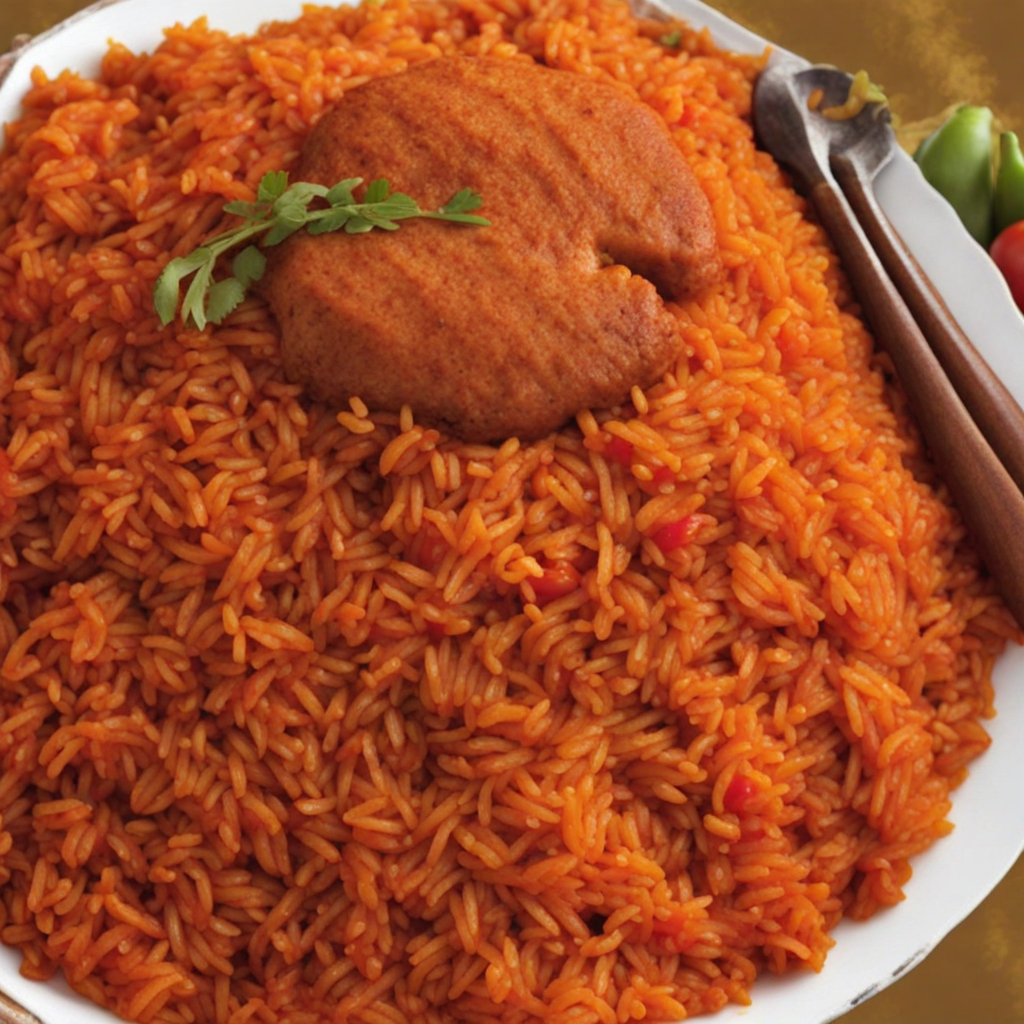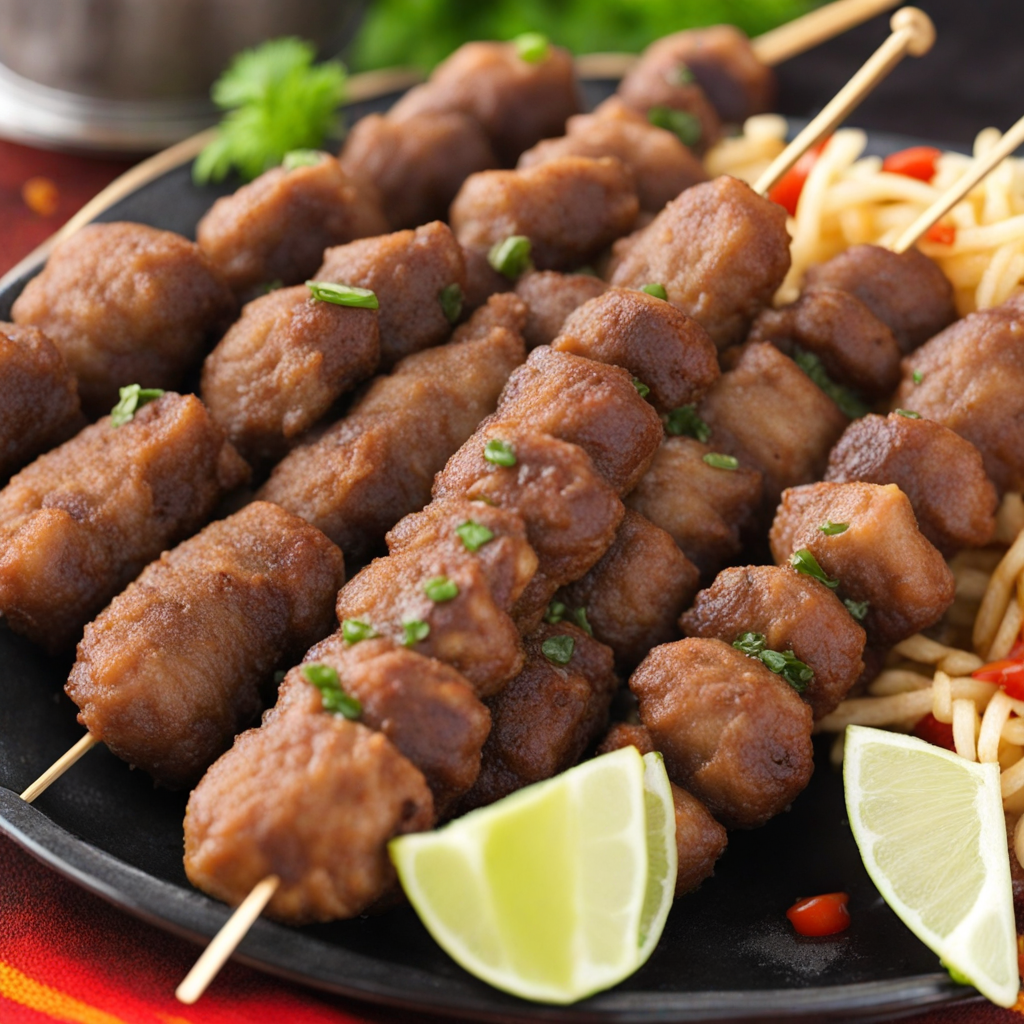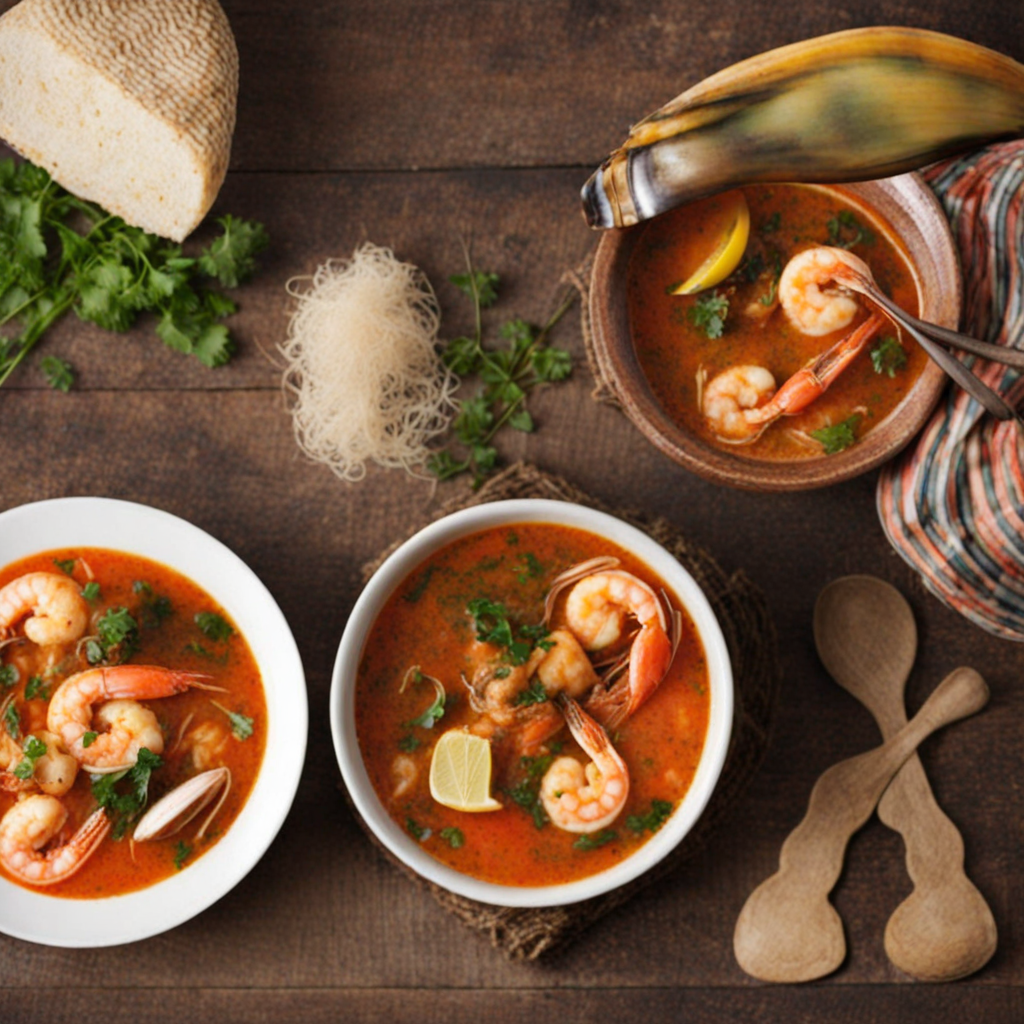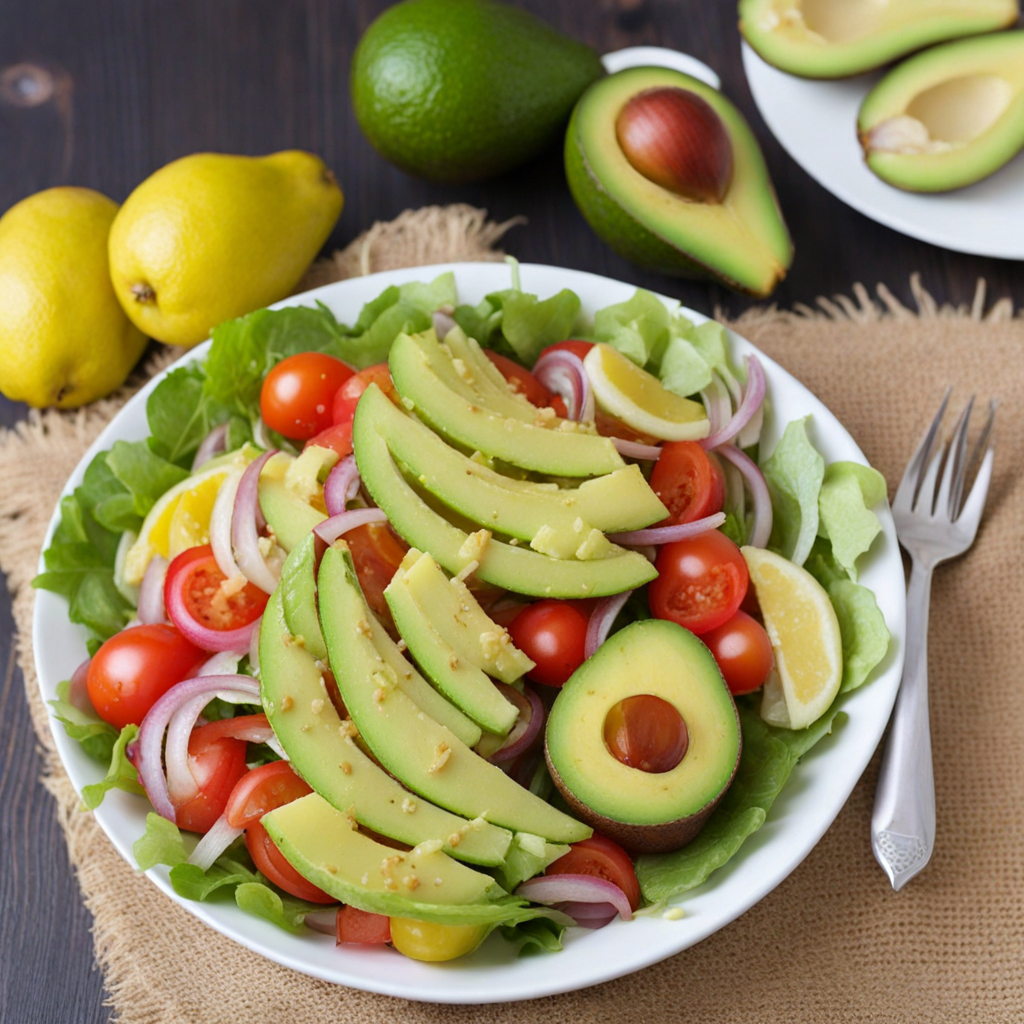Jollof Rice
Jollof Rice is a vibrant and flavorful dish that is a staple in Ghanaian cuisine, celebrated for its rich blend of spices and ingredients. The base of the dish is long-grain rice, which is typically cooked in a savory tomato sauce made from fresh tomatoes, onions, and bell peppers. This sauce is spiced with a mix of local seasonings, including thyme, bay leaves, and ginger, creating a depth of flavor that is both inviting and complex. The cooking process involves simmering the rice in the tomato mixture until it absorbs the rich flavors, resulting in a beautifully colored dish that boasts a tantalizing aroma. What sets Ghanaian Jollof Rice apart is the technique and the balance of flavors; it is often prepared with a smoky element, achieved by cooking it over an open flame or using a well-seasoned pot. This imparts a unique depth that enhances the overall taste profile, making it a favorite at gatherings and celebrations. Jollof Rice is often served with a variety of accompaniments, such as fried plantains, grilled chicken, or beef, adding layers of texture and contrasting flavors that complement the dish perfectly. The communal aspect of enjoying Jollof Rice also elevates its appeal, as it is often shared among family and friends, fostering a sense of togetherness. Each region or household may have its own twist on the recipe, leading to friendly debates over which version reigns supreme. Whether you are tasting it for the first time or revisiting it, Jollof Rice is more than just a meal; it is an experience that embodies the heart and soul of Ghanaian culture.
How It Became This Dish
The History of Jollof Rice: A Culinary Journey Through Ghana #### Origins and Roots Jollof rice, a vibrant dish that has become a staple across West Africa, boasts a rich history intertwined with the continent's cultural and colonial past. Its origins can be traced back to the Wolof people of Senegal, where the dish is believed to have first emerged as "Benachin," meaning "one pot" in Wolof. This traditional preparation method reflects the communal aspects of West African culture, where meals are often shared among family and friends. The concept of cooking rice in a single pot with a mix of tomatoes, onions, and spices spread across the region through trade and migration, particularly during the 15th to 19th centuries. This period saw significant interactions among West African nations and between Africa and Europe, leading to the exchange of culinary practices. As a result, each country adapted the dish to reflect local ingredients and tastes, giving rise to various interpretations of Jollof. #### Cultural Significance In Ghana, Jollof rice holds a special place in the hearts of many. It is more than just a meal; it is an emblem of culture, celebration, and identity. The dish often graces the tables during significant events such as weddings, birthdays, and national holidays. Its presence at gatherings symbolizes unity and togetherness, as it is typically served in large quantities to feed many. The preparation of Jollof rice also allows for cultural expression. Ghanaians take pride in their unique version of the dish, which is characterized by its distinctive flavor profile and cooking technique. The use of local ingredients such as long-grain rice, tomatoes, bell peppers, and spices creates a rich, aromatic dish that is beloved by locals and visitors alike. The communal aspect of enjoying Jollof further cements its status as a cultural staple, as it is often shared among family and friends, fostering bonds and connections. #### The Ghanaian Twist While the origins of Jollof rice may lie in Senegal, the Ghanaian version has evolved into a culinary icon in its own right. Ghanaians typically prepare Jollof by sautéing a blend of tomatoes, onions, and peppers to create a flavorful base, which is then combined with parboiled rice. What sets Ghanaian Jollof apart is its particular blend of spices, which may include ginger, garlic, and thyme, alongside the use of chicken or beef stock for added depth of flavor. The dish is then cooked until the rice absorbs the rich tomato sauce, resulting in a vibrant and colorful presentation. In contrast, neighboring countries, such as Nigeria, have their own interpretations of Jollof rice, leading to a friendly rivalry over whose version is superior. The competition is often showcased during social gatherings and culinary festivals, where individuals passionately defend their national pride through their cooking. This rivalry has popularized Jollof rice, making it a central theme in the culinary landscape of West Africa. #### Development Over Time As the 20th century progressed, the global influence on West African cuisine grew, thanks in part to increased migration, tourism, and globalization. Jollof rice became more accessible to international audiences, leading to a renewed interest in West African culinary traditions. The dish began to appear on menus in restaurants outside of the continent, introducing a wider population to its flavors. In Ghana, the development of Jollof rice has also been influenced by modern cooking techniques and ingredients. The rise of technology has made it easier for cooks to experiment with flavors and presentation, leading to creative variations of the traditional dish. Chefs and home cooks alike have embraced innovation, incorporating elements such as coconut milk, seafood, or even fusion elements like spicy Jollof tacos. Social media has played a significant role in the evolution of Jollof rice as well. Platforms like Instagram and TikTok have allowed food enthusiasts to showcase their Jollof creations, share recipes, and engage in light-hearted debates about the best cooking methods. The hashtag #JollofChallenge has become popular, encouraging culinary enthusiasts to put their own spin on the dish while inviting others to taste and compare. #### Jollof in Contemporary Culture In contemporary Ghanaian society, Jollof rice continues to hold a prominent place in the national consciousness. It is featured prominently in culinary competitions, food festivals, and even national events. The annual "Jollof Festival" celebrates this beloved dish, bringing together chefs, restaurateurs, and food lovers from all walks of life to showcase their culinary skills. These events not only celebrate the dish but also promote local ingredients and the importance of food sustainability. Moreover, Jollof rice has become a symbol of national pride, especially among the youth. As younger generations reconnect with their culinary heritage, there is a renewed emphasis on traditional cooking practices. The dish serves as a bridge between the past and present, allowing Ghanaians to honor their cultural roots while embracing modern influences. #### Conclusion The journey of Jollof rice from its origins in Senegal to becoming a cherished dish in Ghana reflects the rich tapestry of West African history and culture. Its significance transcends mere sustenance; it embodies community, celebration, and a shared identity among Ghanaians and West Africans at large. As it continues to evolve, Jollof rice remains a powerful symbol of culinary heritage, connecting generations and fostering a sense of belonging in a rapidly changing world. Whether enjoyed at a festive gathering or a simple family meal, Jollof rice will always be more than just food—it is a celebration of life, culture, and togetherness.
You may like
Discover local flavors from Ghana







